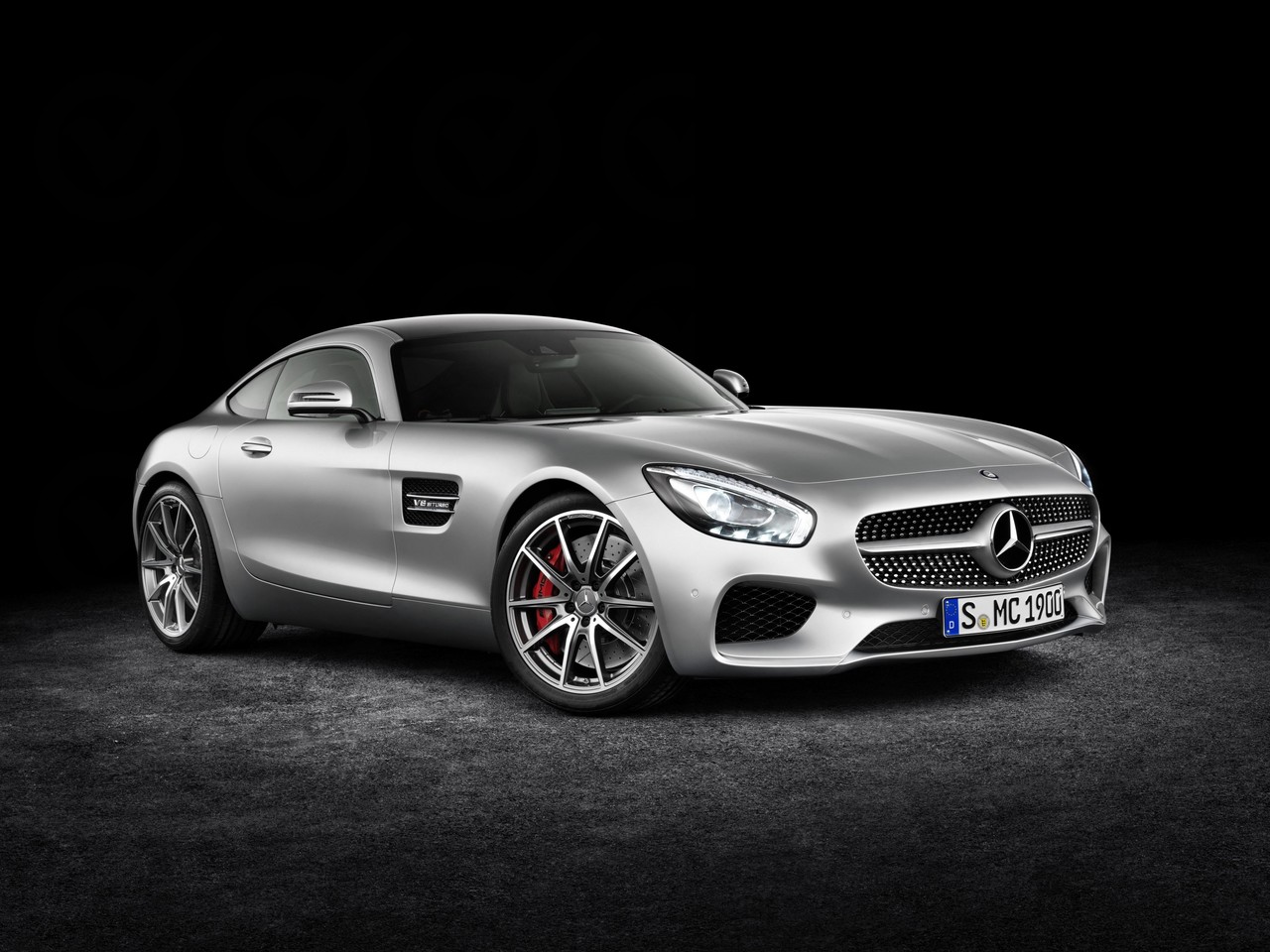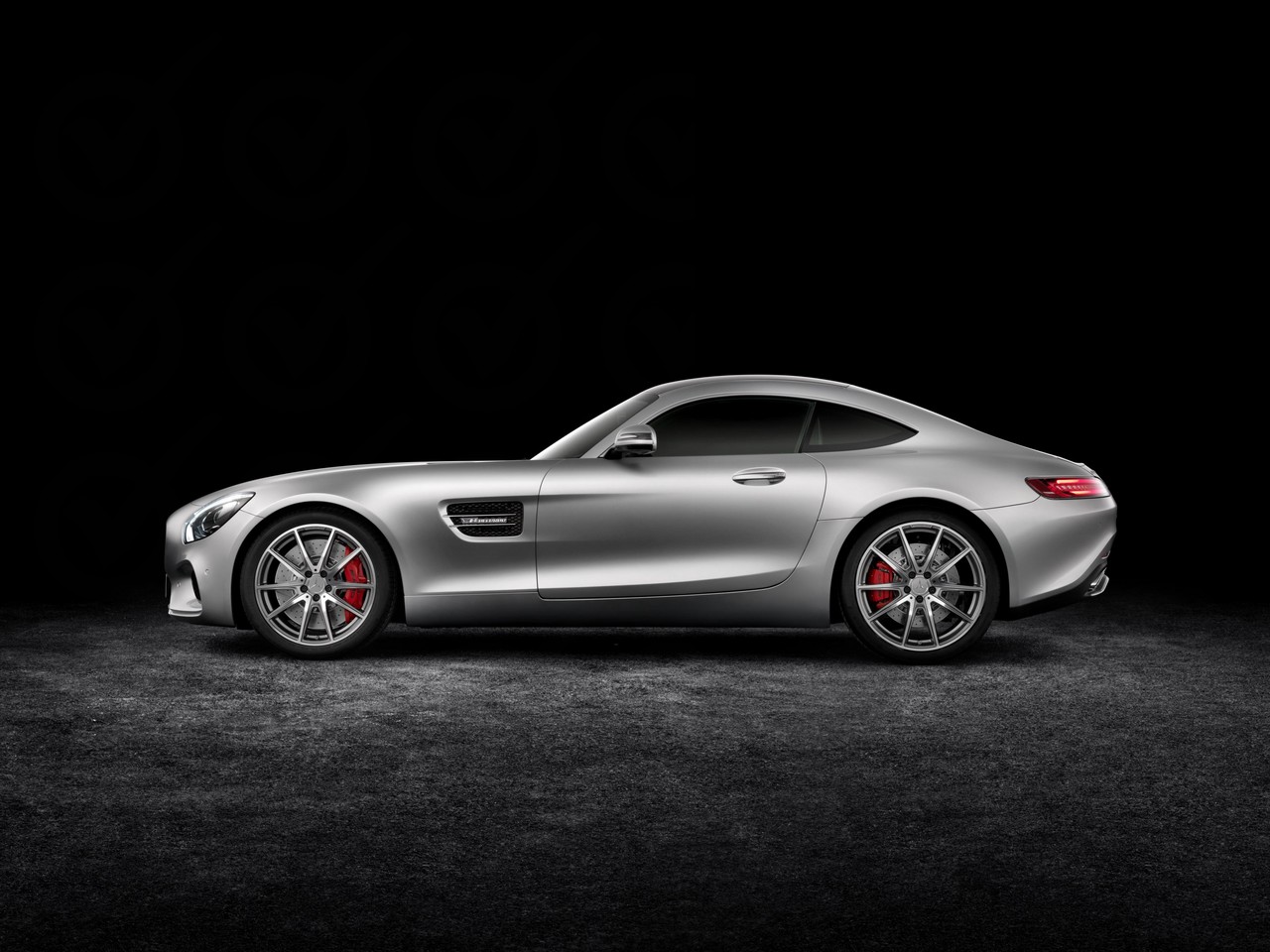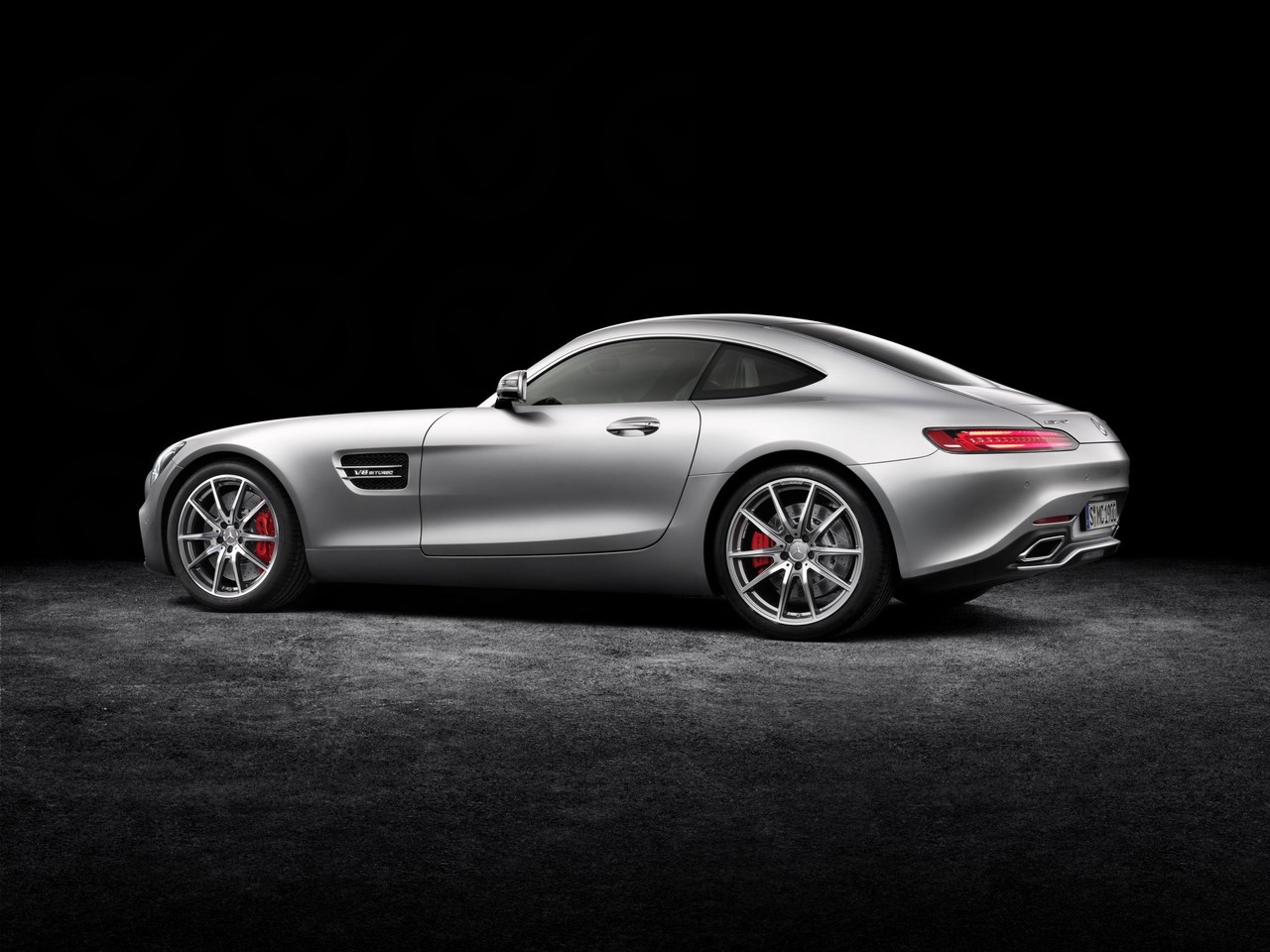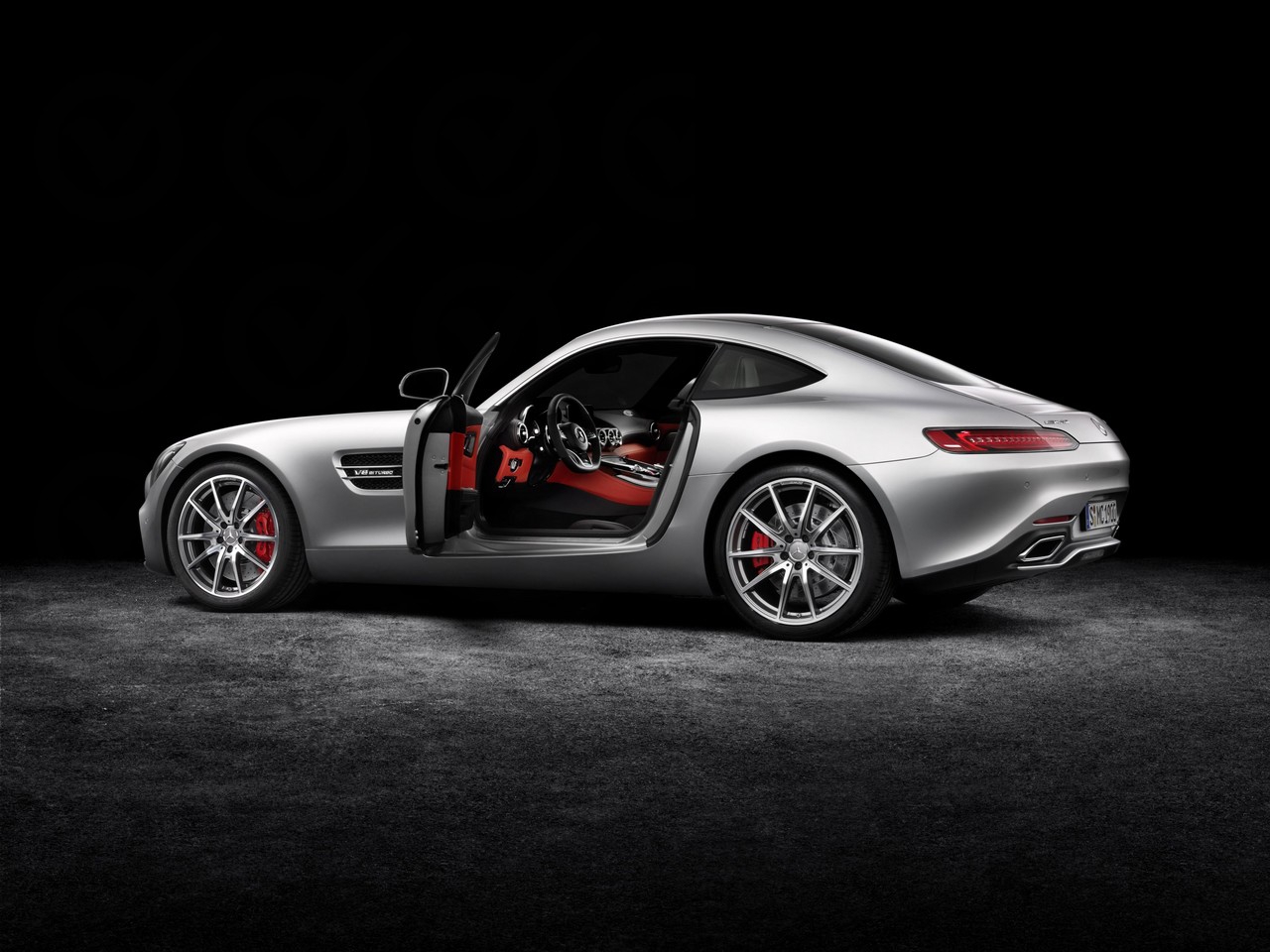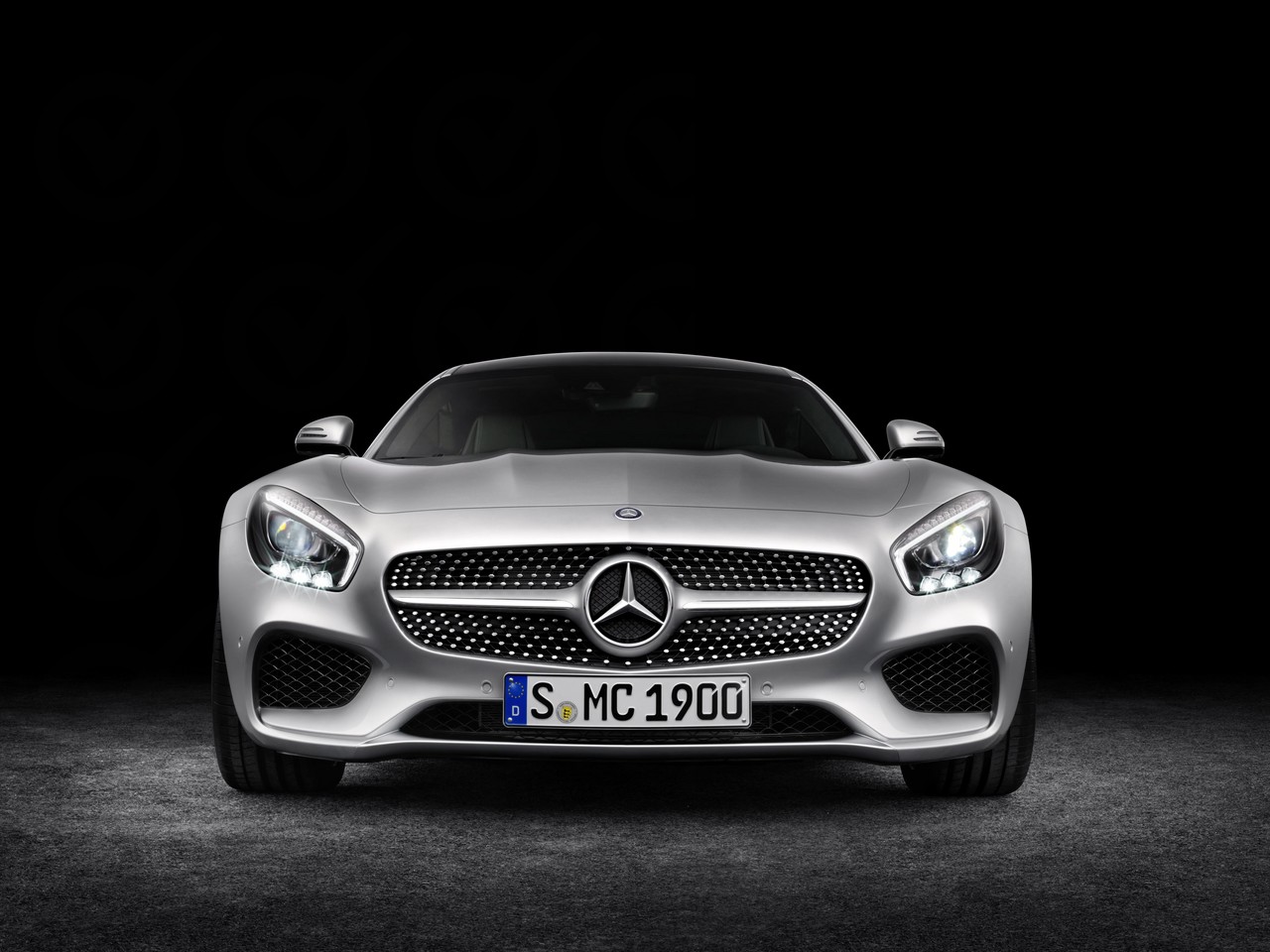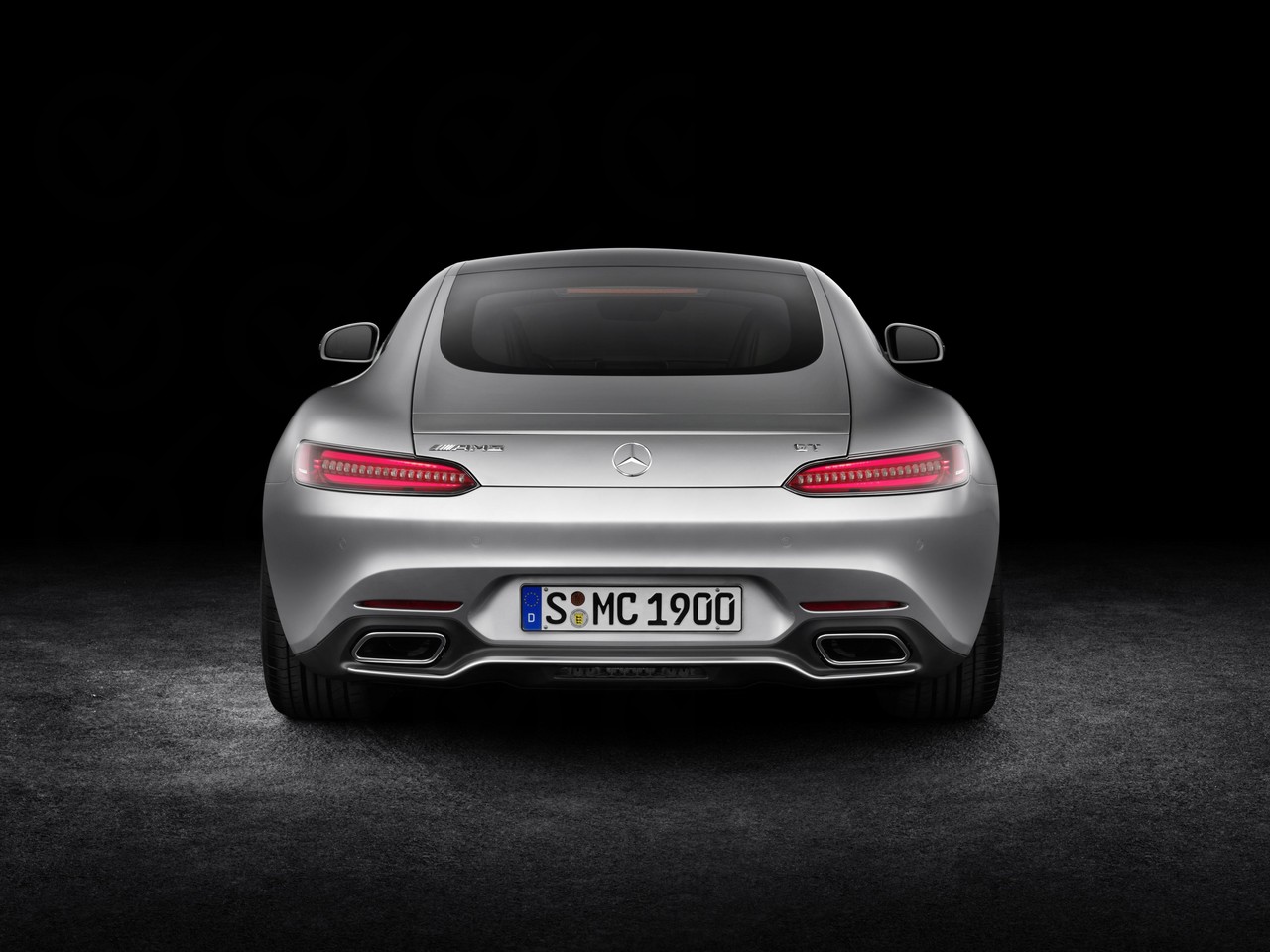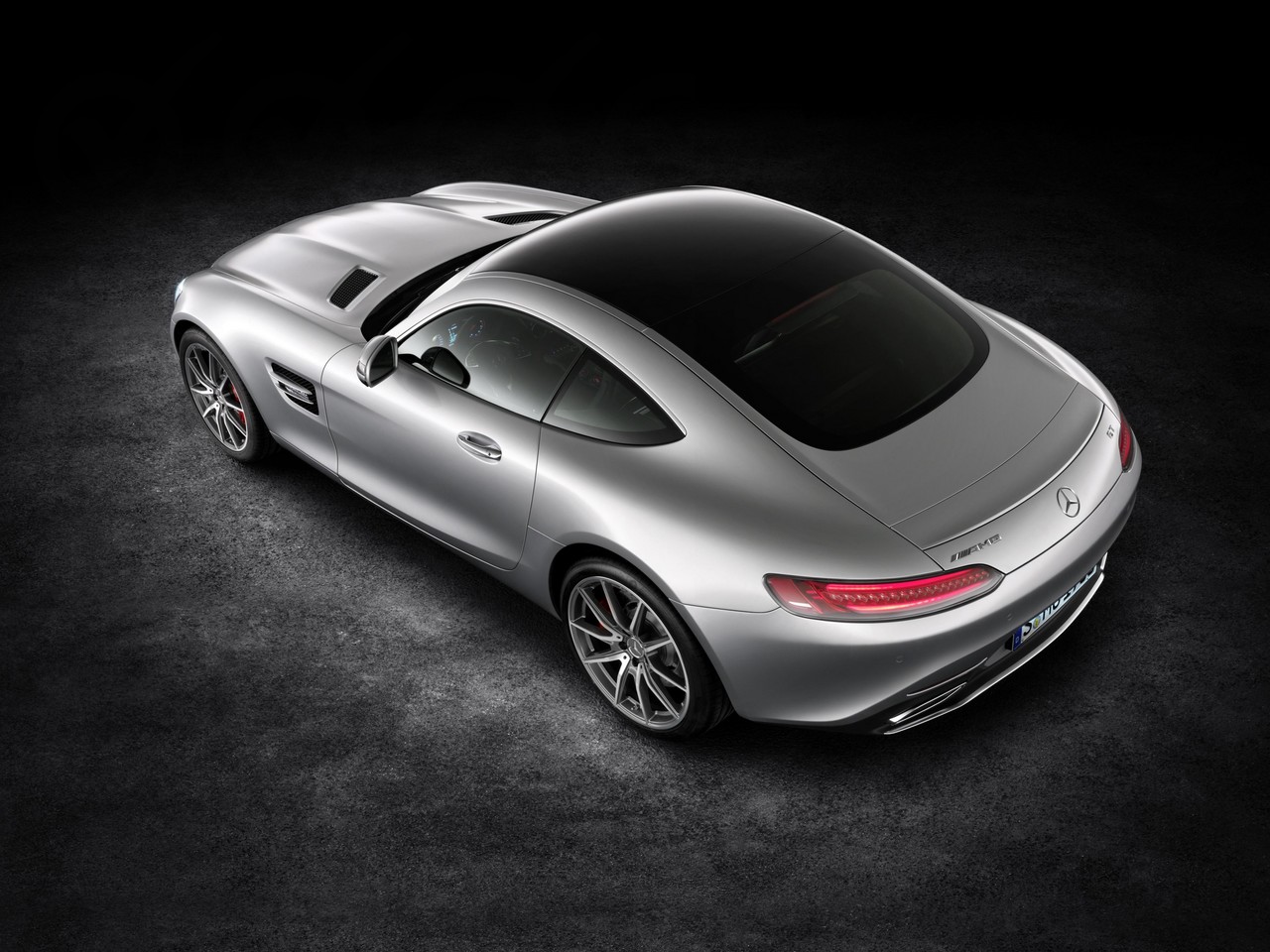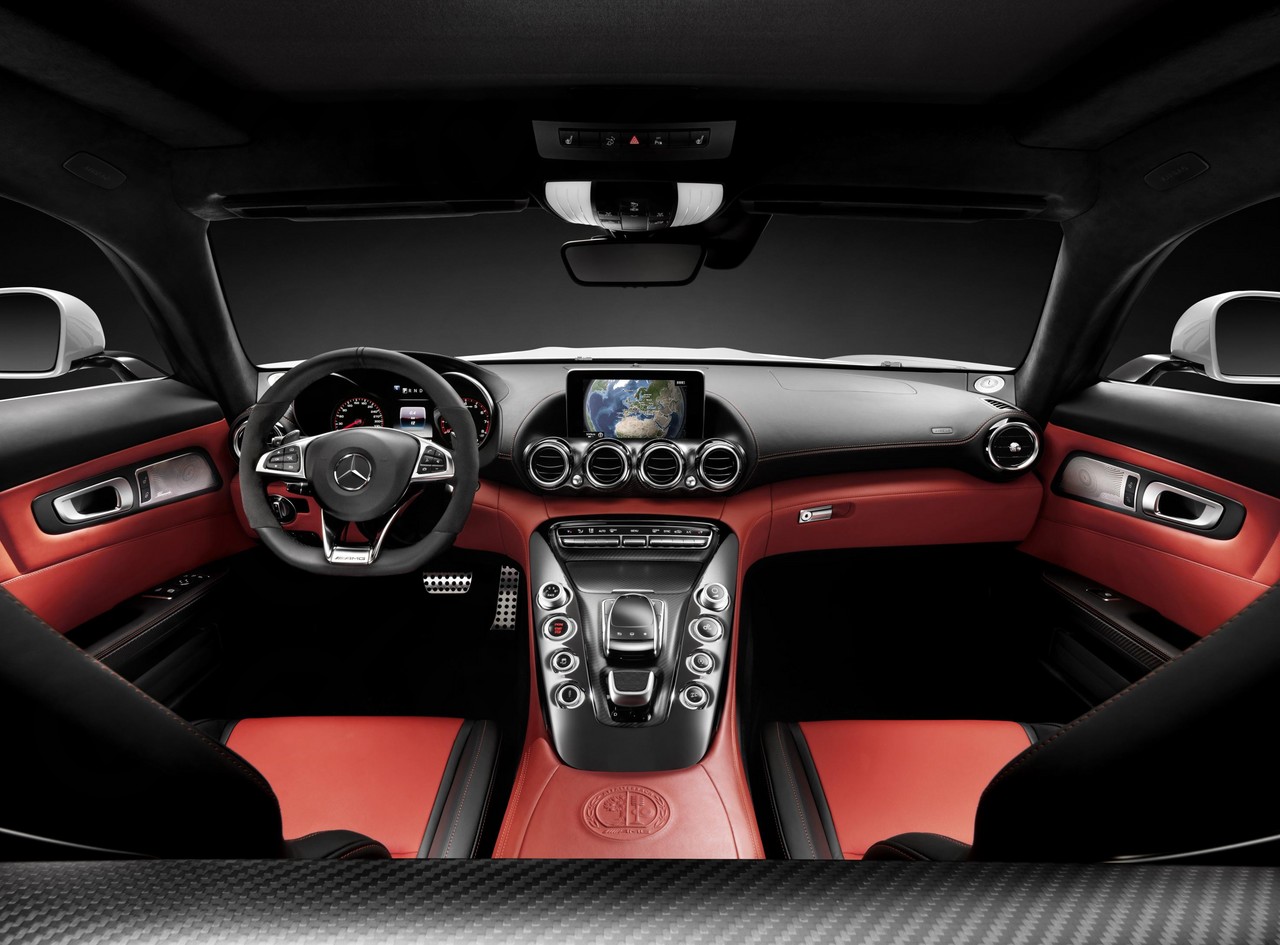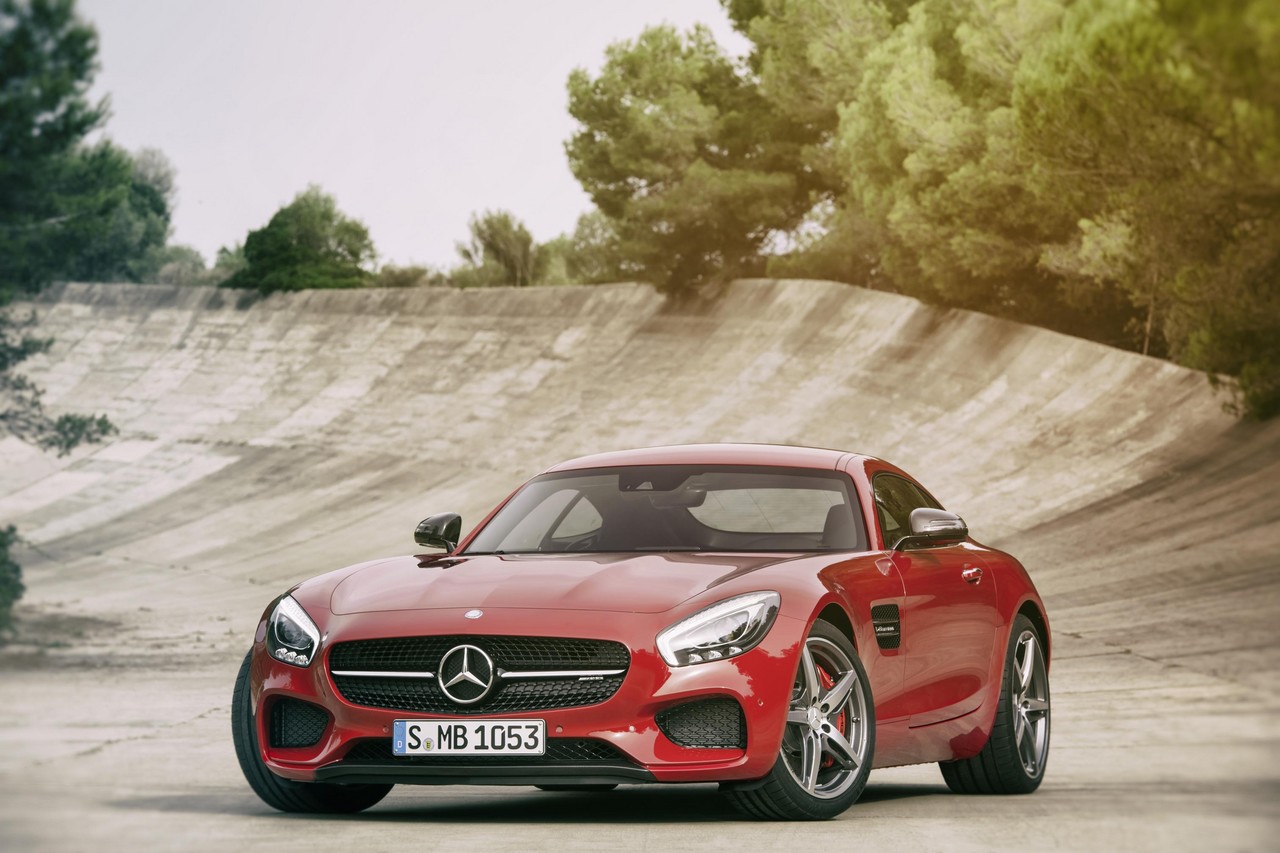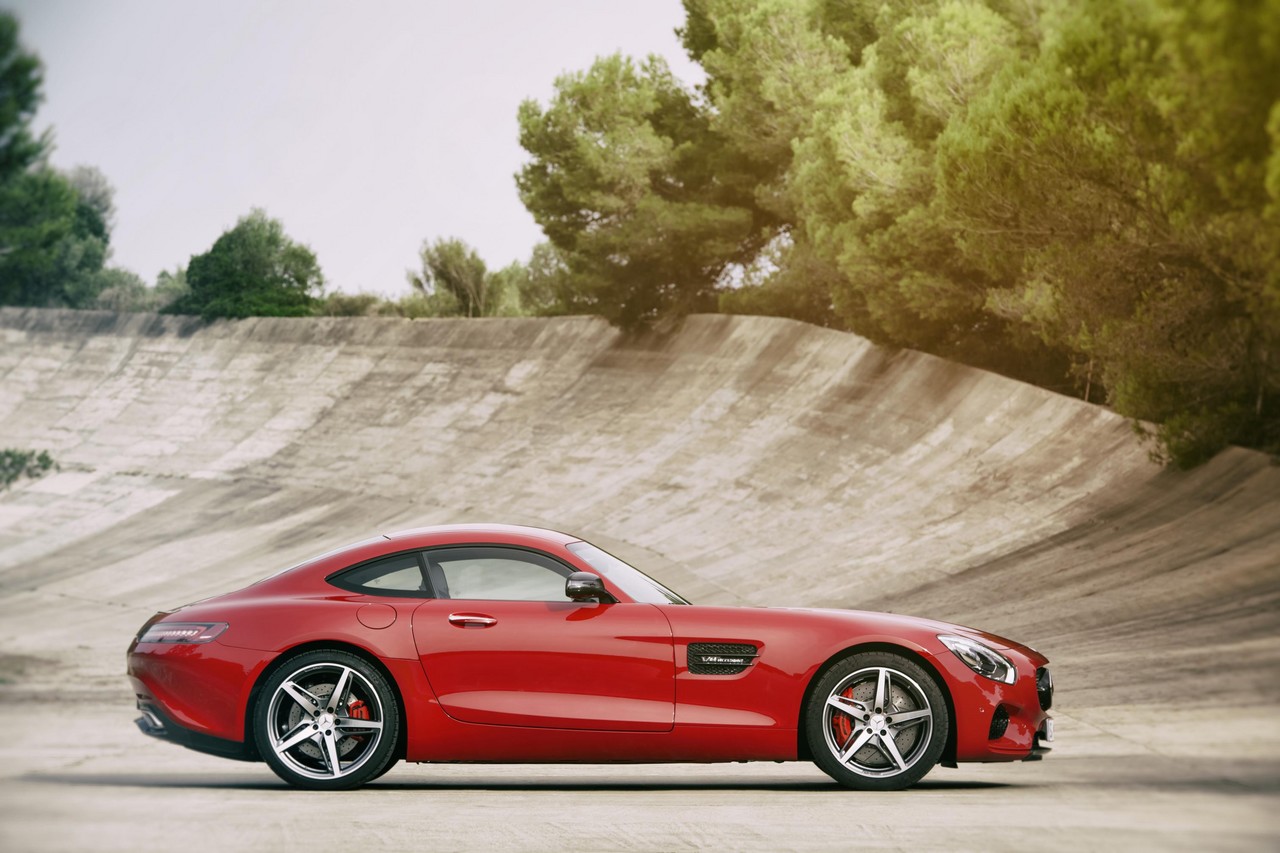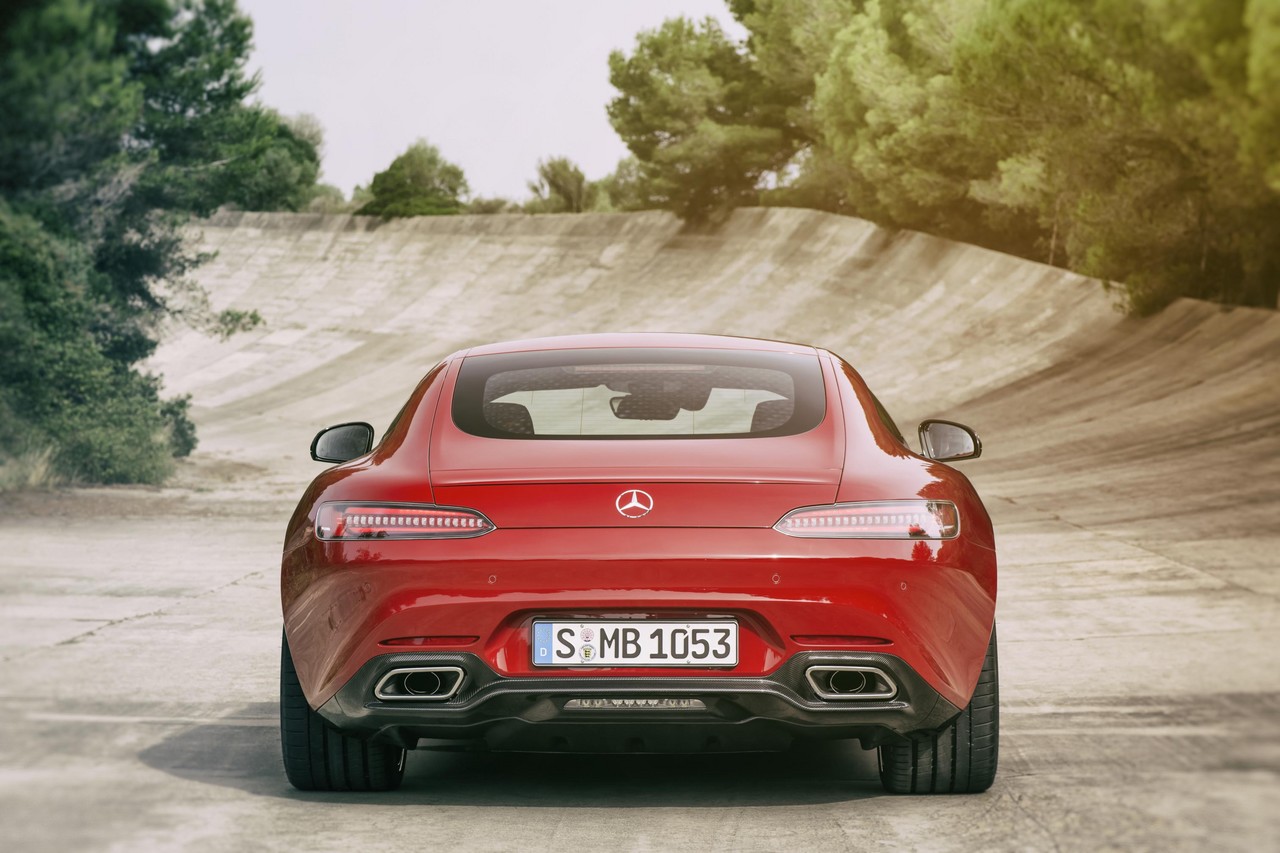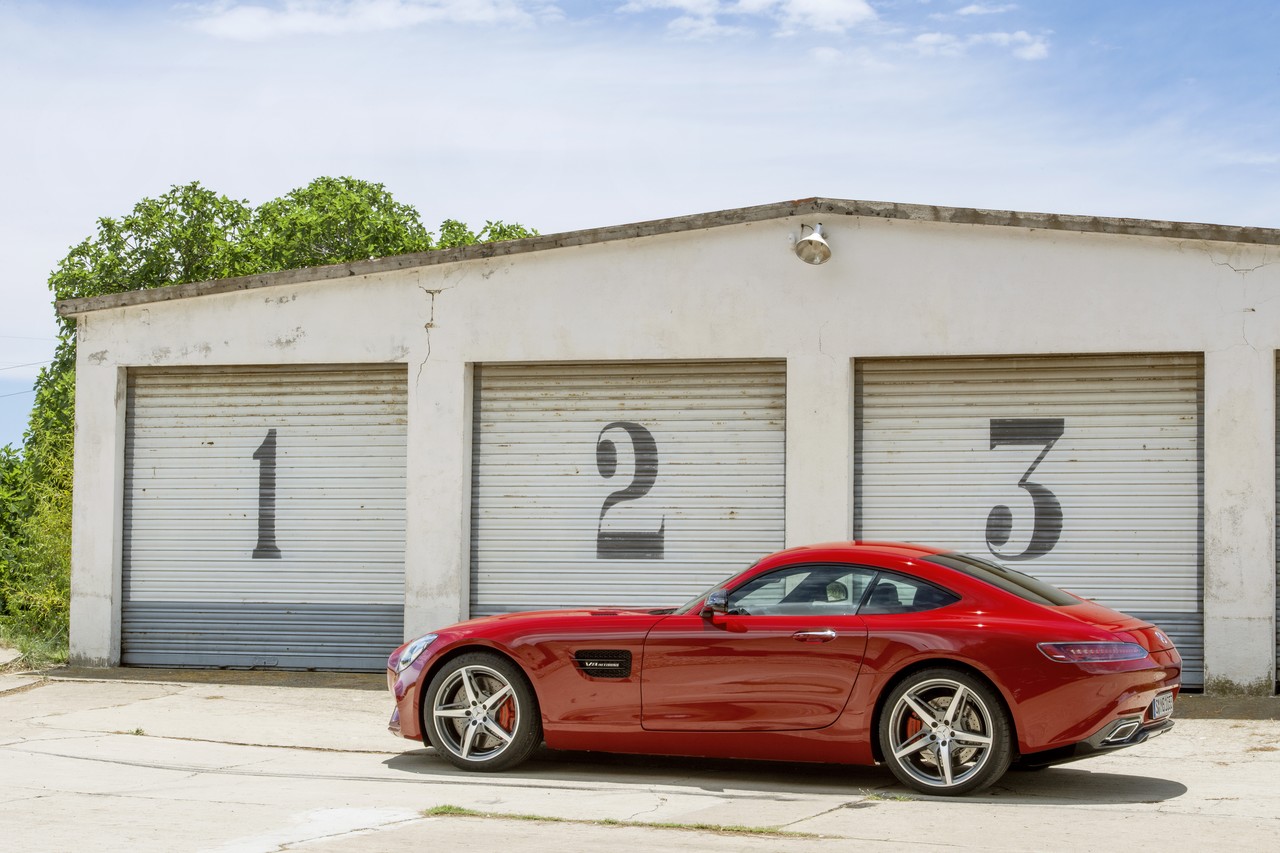
- Powerful 4.0-litre M157 biturbo V8 engine sounds great
- Excellent dynamics
- Agile, balanced chassis
- Light, fast-ratio steering lacks feel
- Firm ride
- Seats lack lumbar support
- Awkward gear selector position
- Cramped interior has poor rear visibility
Overview
Commencing production in March 2015, the Mercedes-AMG C190 GT was a high-performance liftback. Manufactured in Sindelfingen, Germany, the rear-wheel drive Mercedes-AMG GT was powered by a 4.0-litre biturbo V8 petrol engine that was mated to a seven-speed double clutch transmission (DCT). Initially, only the C190 GT S was offered in Australia; from late 2016, however, the C190 GT was also available.
M178 engine
Assembled by hand in Affalterbach, the 4.0-litre M178 V8 engine had a cast aluminium closed-deck block, zirconium alloy cylinder heads, two turbochargers mounted within the engine’s ‘V’ providing maximum boost pressure of 1.2 bar (17.4 psi), Piezo direct petrol injection, cylinder bore liners with ‘Nanoslide’ technology, double overhead camshafts, variable inlet and exhaust valve timing, four valves per cylinder, a compression ratio of 10.5:1, dry sump lubrication and an ECO start/stop function. With its aluminium crankcase, the engine had a dry weight of 209 kg.
For the GT S, the M178 engine had an AMG performance exhaust system with fully variable exhaust flaps and peak outputs of 375 kW and 650 Nm. Furthermore, the GT S could accelerate from rest to 100 km/h in 3.8 seconds and had a top speed of 310 km/h.
| Years | Engine | Trans. | Peak power | Peak torque | |
|---|---|---|---|---|---|
| GT | 2015-17 | 3982 cc M178 biturbo petrol V8 | 7sp DCT | 340 kW at 6000 rpm | 600 Nm at 1600-5000 rpm |
| 2017-om | 3982 cc M178 biturbo petrol V8 | 7sp DCT | 350 kW at 6000 rpm | 630 Nm at 1700-5000 rpm | |
| GT S | 2015-17 | 3982 cc M178 biturbo petrol V8 | 7sp DCT | 375 kW at 6250 rpm | 650 Nm at 1750-5000 rpm |
| 2017-21 | 3982 cc M178 biturbo petrol V8 | 7sp DCT | 384 kW at 6250 rpm | 670 Nm at 1800-5000 rpm |
Transmission
The seven-speed ‘AMG SPEEDSHIFT’ dual clutch transmission (DCT) was positioned at the rear axle in a transaxle configuration and enabled the driver to select the following gearshift modes:
- ‘C’ (Controlled Efficiency);
- ‘S’ (Sport);
- ‘S+’ (Sport Plus);
- ‘I’ (Individual); and,
- Reserved for the GT S, ‘Race’, which adjusted the shift strategy for racetrack use and provided the fastest gearshifts.
By pressing the ‘M’ button, the driver could activate the manual transmission mode for sequential gearshifts.
Chassis and dimensions
The Mercedes-AMG GT had a front mid-engine layout and transaxle configuration which provided a 47:53 front:rear weight distribution. With over ninety (90) percent of the spaceframe made out of aluminium components, the GT had a 231 kg bodyshell. Furthermore, the chassis – including the greenhouse and body – were made out of light alloy, the boot lid out of steel and the front deck out of magnesium. As a result of these measures, the GT had a kerb weight of 1540 kg.
Compared to the Mercedes-Benz SLS AMG which it effectively replaced, the Mercedes-AMG GT was 92 mm shorter (at 4546 mm), the same width (1939 mm), 28 mm taller (1289 mm) and had a 50 mm shorter wheelbase (2630 mm). Furthermore, the boot had a luggage capacity of 350 litres.
Suspension
The Mercedes-AMG GT had double wishbone suspension front and rear, with the wishbones, steering knuckles and hub carriers manufactured out of forged aluminium to reduce unsprung mass.
As standard, the Mercedes-AMG GT S was fitted with ‘AMG Ride Control’ which included electronically-controlled dampers. From the AMG Drive Unit, or by using the AMG Dynamic Select drive modes, the driver could select from ‘Comfort’, ‘Sport’ and ‘Sport plus’ modes.
Safety equipment
Standard safety equipment for the Mercedes-AMG GT included dual front airbags, dual front knee airbags, combined thorax/pelvis side airbags, full-length curtain airbags, ABS, electronic brake force distribution, brake assist, electronic stability control, traction control and front seatbelts with pre-tensioners and load limiters.
I think curtain airbags are door mounted
As standard, the Mercedes-AMG GT was also equipped with:
- Pre-Safe: if a collision was anticipated, Pre-Safe initiated automatic tensioning of the front occupants’ seatbelts, closure of the windows and sunroof and adjusted the position of the front passenger seat (if the memory package was fitted) to enhance occupant protection;
- Collision Prevention Assist Plus (radar-based collision warning with autonomous braking and adaptive Brake Assist): operating at speeds up to 250 km/h to monitor the traffic ahead and at speeds up to 50 km/h for stationary objects, Collision Prevention Assist would issue a visual warning (when driving at speeds over 7 km/h) and an optical warning (when driving at speeds over 30 km/h if there was a collision risk. At speeds below 105 km/h (250 km/h in conjunction with Distronic Plus), Collision Prevention Assist Plus would initially provide partial autonomous braking to reduce vehicle speed and alert the driver. Furthermore, adaptive Brake Assist would calculate the braking force required and prime the braking system for optimum response when the driver depressed the brake pedal. If the driver did not respond and a collision was unavoidable, then maximum braking force would be applied to reduce vehicle speed. At initial vehicle speeds of up to 40 km/h, rear-end collisions could be prevented;
- Lane Keeping Assist (passive): used a camera behind the windscreen to monitor lane markings and detect if the vehicle was drifting outside its lane. If so, acoustic and visual warnings would be issued;
- Blind Spot Assist (passive): used two radar sensors in the rear of the vehicle to warn the driver before an indicated lane-change if a vehicle is in the driver’s blind spot; and,
- Attention Assist: operated at speeds in excess of 80 km/h and assessed driver behaviour (including steering movements) for signs of drowsiness; if detected, the driver would be provided with visual and audible warnings.
From December 2016, the Mercedes-AMG GT S was equipped with ‘Distronic Plus’, an ‘adaptive’ cruise control system which used two short-range radar sensors positioned behind the front bumper to monitor the road up to 30 metres ahead, and a long-range radar located behind the radiator grille which had a range of 200 metres. Operating at speeds up to 200 km/h, Distronic Plus used an electronic control unit to analyse the information from both radar systems to calculate the engine, automatic transmission and braking parameters required for proximity control. As such, Distronic Plus could automatically apply the brakes to prevent the vehicle from becoming too close to traffic ahead (the time interval could be specified) and accelerate back to the set speed when traffic allowed. To accelerate from rest, the driver only needed to operate the Distronic stalk on the steering column or briefly depress the accelerator pedal. With Distronic Plus, automatic deceleration of up to four (4) m/s2was possible. If Distronic Plus detected that heavier braking was required, a warning light would illuminate in the instrument cluster and be accompanied by an audible warning. Furthermore, the electronic proximity control system could be activated independently of Distronic Plus at speeds over 30 km/h to alert the driver if they were approaching another vehicle too rapidly.
Brakes
Upon its international launch, the Mercedes-AMG GT had a high performance composite brake system which consisted of internally ventilated and perforated 360 mm by 26 mm brake discs front and rear; the GT S, however, had 390 mm by 36 mm front brake discs. Furthermore, a ceramic high-performance composite brake system was available as an extra-cost option which used 402 mm front and 360 mm discs.
For Australia, however, the Mercedes-AMG GT had the same braking package as the GT S.
Features: Mercedes-AMG GT
Standard features for the Mercedes-AMG GT S included 19-inch ten spoke alloy wheels, COMAND Online multimedia system with a 21.3 cm display, navigation with 3D maps and ‘Linguatronic’ voice control, integrated WLAN hotspot, Bluetooth mobile phone connectivity and audio streaming, a 640 watt Burmester surround sound system with ten speakers and a ten channel digital sound processing (DSP) amplifier, a CD/DVD player, two USB ports, an SDHC memory card slot, a 10 GB ‘Media Register’ and a digital radio tuner (DAB+), dual-zone ‘Thermotronic’ climate control air conditioning, power adjustable and heated AMG front seats, cruise control, LED headlights, dusk-sensing headlights, front and rear parking sensors, a reversing camera, a performance steering wheel with black nappa leather and ‘Dinamica’ microfibre trim, remote central locking with proximity key (i.e. keyless entry), power adjustable and heated door mirrors with folding function, power windows, a height and reach adjustable steering wheel, driver memory settings (for the seats, mirrors and steering column positions), push-button start, AMG floor mats, illuminated door sill panels, tyre pressure monitoring, a trip computer, an alarm and immobiliser.
Features: Mercedes-AMG GT S
Compared to the Mercedes-AMG GT, the GT S was further equipped with 19-inch front alloy wheels with 265/35 R19 tyres and 20-inch rear alloy wheels with 295/30 R20 tyres, Nappa leather upholstery, a glass panoramic sunroof and ‘AMG performance’ exhaust system.
As standard, the GT S was fitted with an electronically-controlled rear-axle locking differential (integrated into the transmission housing) which provides more sensitive, faster control than a mechanical lock and a variable locking effect in acceleration and overrun mode. The GT S also had a ‘drivetrain damping’ function whereby a specially-tuned damper reduces the rolling motion of the drivetrain.
AMG Dynamic Plus package
For Australia, the Mercedes-AMG GT S was fitted with the ‘AMG DYNAMIC PLUS’ package which included dynamic engine and transmission mounts which continuously adjusted their stiffness according to driving conditions and handling.
Specifications
- Specifications: Mercedes-AMG C190 GT (October 2015)
- Specifications: Mercedes-AMG C190 GT (December 2016)
Related links
- Press kit: Mercedes-AMG C190 GT
- Mercedes-Benz Australia: Mercedes-AMG GT
- Wikipedia.org: Mercedes-AMG GT
